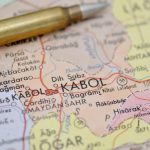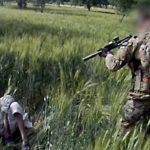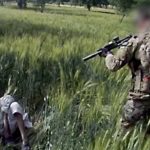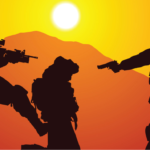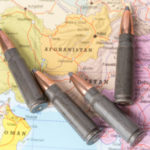Australian Soldiers Unlawfully Killed Civilians and Covered it Up
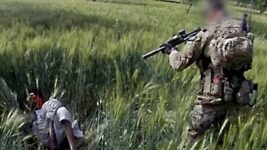
Released publicly on 19 November 2020, the redacted version of the Inspector-General of the Australian Defence Force Afghanistan Inquiry report – or the ‘Brereton report’ – is a 465 page document covering the findings of a four year investigation into Australian SAS operations in Afghanistan.
Carried out by NSW Supreme Court Justice Paul Brereton, the investigation was sparked by long-term rumours of war crimes and the subsequent findings of a 2016 inquiry into their validity by Defence Department consultant Dr Samantha Crompvoets.
The Brereton report’s unclassified introduction and executive summary sets out the main findings of the investigation without compromising any “potential criminal proceedings” by outlining any of the gory details.
But without going into the alleged war crimes, the prelude to the main report is disturbing in itself, as it substantiates the long-term rumours of illegal actions perpetrated by the Special Operations Task Group (SOTG) over 2005 to 2016, while it was deployed to the Central Asian nation.
The executive summary also seems to be at great pains to assure the reader that while there was a culture of SOTG troops flagrantly breaching the Law of Armed Conflict, any understanding that criminal behaviour was taking place never went beyond the level of patrol commander.
The refined findings
The laws of armed conflict prohibit the murder or cruel treatment of civilians and hors-de-combat: combatants no longer fighting due to wounding, surrender or capture. And to transgress this prohibition is to commit a war crime.
The Brereton inquiry examined 28 incidents involving the alleged breaches of the Law of Armed Conflict, which were found to be unsubstantiated.
However, it investigated a further 23 incidents, which were found to hold credible evidence of war crimes being perpetrated by Australian troops.
These credible incidents involved the alleged murder of 39 civilians or hors-de-combat and the cruel treatment of two more. It was found none of the decisions to kill these people were made in the “heat of battle”. And the majority of those killed involved captured troops or “persons under control”.
A total of 25 current or former Australian Defence Force personnel were found to have participated in these alleged war crimes, some as the principal actors, while others were accessories. And a few of these troops have been implicated in more than one incident.
Credible information was also found regarding SOTG troops carrying “throwdowns”, which are foreign weapons and equipment – pistols, radios, grenades – that can be placed upon the body of a “deliberate unlawful killing” to give the impression they were armed as they were murdered.
The inquiry further determined that patrol commanders had required junior soldiers to shoot an unarmed prisoner in order to get them into killing mode. This is a practice known as “blooding”. And it would take place after local nationals had been secured as prisoners of war.
“The patrol commander would take a person under control and the junior member, who would then be directed to kill the person under control,” the report reads, adding that throwdowns would then be placed on the body and a cover story created. “This was reinforced with a code of silence.”
The report recommends that 36 matters be sent to the Australian Federal Police for investigation, which may then be passed on to the Commonwealth Director of Prosecutions to be prosecuted in civilian criminal courts.
The 36 matters relate to the 23 credible incidents and involve 19 Australian individuals.
Mum’s the word
The report states that it would have been easy to find “poor command and leadership” as the primary blame for these incidents.
However, Brereton found that “the criminal behaviour of a few was commenced, committed, continued and concealed at the patrol commander level, that is, at corporal or sergeant level”.
No evidence was uncovered to indicate that there was any knowledge or reckless indifference to the war crimes up the chain of command, going all the way to Australian Defence headquarters.
And while it’s “easy now” to identify steps that could have been taken to curb such behaviour, evidently no one would have expected that elite soldiers were partaking in illegal acts. So, suspicion wouldn’t be a first reaction to any rumours, rather the natural initial response would be disbelief.
“The more sinister use” unknown
Yet, despite troop commanders not being well positioned to know what patrol commanders were keeping disclosed, the inquiry found that by 2012 and 2013, troops commanders, and perhaps even squadron commanders, had a “suspicion if not knowledge” of the use of throwdowns in the field.
The document then goes on to maintain that these commanders were only aware that throwdowns were being utilised on the ground to conceal incidents of when enemy troops had been killed during lawful engagement and were subsequently found to be unarmed.
So, these commanders who were privy to throwdown use, or at least rumours of it, are taken to have only been aware of the “dishonest and discreditable” use of the throwdowns during lawful engagement, not that the illegal items were being used to cover up war crimes.
Absolving the command chain
According to the Brereton report, SOTG commanders higher up the chain must bear “moral command responsibility and accountability” for what happened under their control. Part of this responsibility also falls upon the Special Air Service (SAS) Regiment for embracing “warrior culture”.
However, this responsibility and accountability doesn’t fall upon those at higher headquarters, as they didn’t have sufficient control organisationally or geographically to influence SOTG operations on the ground.
It was also found that the Australian Defence Force should bear some responsibility as it was deploying troops from a small pool of special forces personnel repeatedly over a protracted period.
“Ministers were briefed that the task was manageable,” the report reads. “The responsibility lies in the Australian Defence Force, not with the government of the day.”
Only the beginning
In concluding the executive summary, the report makes the point that the Australian Defence Force was correct in calling the inquiry, as once allegations begin to emerge, they can become corrosive if not dealt with. And the ADF has “taken ownership of its own problem”.
It’s yet to be seen whether once the criminal trials get underway and more information comes to the surface whether the absolution the report provides to those higher up remains or if there are indications that some understanding of what was transpiring on the ground was known up the chain.
But what is certain is that the release of the Brereton report marks the beginning of an outpouring of revelations, not the end point.


